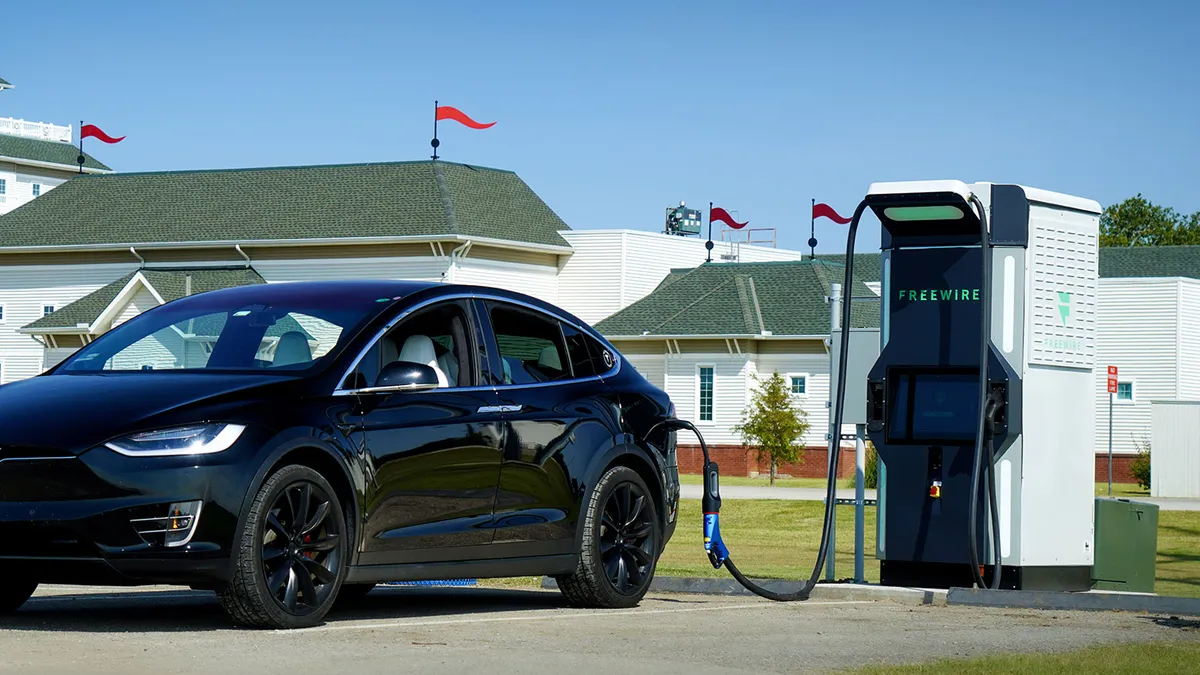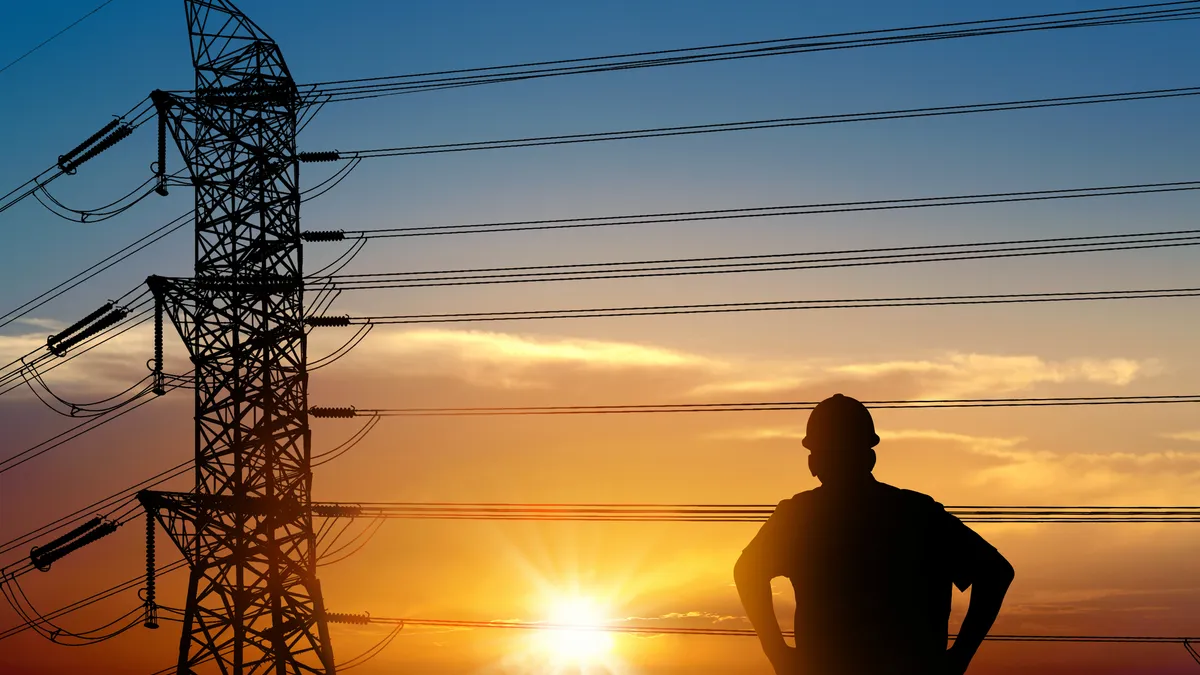Michael Hartnack is senior solution director, customer energy solutions, and Jesse Hitchcock is senior analyst, EVs, at E Source
As EVs proliferate here in the U.S. and internationally, so too do the widespread benefits to customers, utilities, our planet and the power grid. However, with these benefits come a few big challenges that we’ve never dealt with before and haven’t really figured out how to manage. One challenge is figuring out who pays for the grid infrastructure upgrades needed as a result of EV load growth on a transformer or feeder.
A few utility programs, including those from DTE Energy, PG&E, Public Service Electric & Gas Co. and Xcel Energy Colorado, are beginning to try to figure this out. But when it comes to electrification planning and incentive programs, there has still been relatively little consideration of the needs and costs surrounding utility grid-side service upgrades. Utilities are increasingly challenged by how to pay for these upgrades in a way that’s fair and equitable for customers.
Traditionally, utilities have supported panel or service upgrades as requests are received — a first-come-first-serve basis. Once a feeder reaches service capacity, a customer may have to pay some or all of the upgrade costs associated with increased service capacity at that location. And they might have to even if earlier service upgrades contributed more to total capacity or over-capacity conditions. Yep, that’s right: if you’re the last customer in your neighborhood to, say, buy an EV, and the transformer becomes overloaded once you start charging, you may be saddled with the bill for the transformer service upgrade.
This problem is likely to have substantial energy equity implications. Some utilities have tried to support customers with these costs through charging infrastructure enablement programs, several of which I’ve detailed below.
How do we make this right?
This issue is becoming a serious problem that, to my knowledge, no utility has fully solved yet. To overcome these barriers and successfully transform our energy systems, we’ll probably need to completely rethink how we decide what utilities can and can’t pay for. For example, the “obligation to serve” limitation on most utilities today — which requires that a customer must request a service upgrade before work can begin — is insufficient to meet our electrification and decarbonization goals.
One possible alternative to our traditional cost-based regulatory framework is a transition to a more performance-based ratemaking approach that can incentivize efficient and equitable service upgrade processes. E Source recently published a white paper on this topic: Performance-based regulatory strategies to accelerate beneficial electrification.
We’re also seeing some utilities shift funds from other customer programs to pay for electrification costs. For example, the Sacramento Municipal Utility District has completely reimagined its demand-side management program portfolio, which used to be dominated by efficiency measures (even though, like many utilities, savings were often driven by commercial lighting projects).
Now, with performance metrics for portfolio carbon reduction in place, SMUD is investing heavily in electrification programs, including residential EV and building electrification incentives. Over time, SMUD expects that the bulk of its spending will be on electrification and a relatively small share of budgets will be spent on efficiency. To learn more about how SMUD made this transition, see Recurve’s article How SMUD Re-Engineered Itself to Focus On Decarbonization Through Flexibility and Electrification.
Electrification programs, at least in theory, are load-building activities: you upgrade electrical panels, service lines and transformers to deliver (and sell) more electricity. The aversion to load-building (and the inability to speak openly about it) has been spreading to the rest of the country of late. However, the amount of new revenue utilities can derive from vehicle and building electrification isn’t equivalent to simply directly fuel-switching all gas-powered end uses. That would be too expensive and too negatively impactful for the grid.
We have to electrify efficiently and account for fuel-neutral energy savings to appropriately account for the impact of electrification. To do that, utilities and their regulators must place strong incentives on efficient electrification and controlling demand from new electric loads. The fact is that we won’t be able to electrify cost-effectively at scale without ensuring buildings are highly efficient and the associated demand is managed appropriately.
Steps like placing homes on “watt diets” (auditing to reduce a home’s peak and average demand), using circuit splitters, and managing demand with smart circuit breakers and panels will be needed to drive efficient electrification. Customers should be charged more for service if they don’t opt for any of these solutions or related utility programs like managed charging, demand response, smart homes and distributed energy resources management systems. Higher charges are especially necessary if these customers choose to install a high-power EV charger at their home or business (e.g., a 19.2 kilowatt behemoth).
Utilities can help customers with service upgrade costs
Utility programs to support service upgrades aren’t common, but I’ll point out a few examples from DTE, PG&E, PSE&G and Xcel Energy Colorado that provide funding for line extensions, pole-to-meter upgrades, service connection upgrades, and make-ready EV infrastructure. In a recent filing, DTE requested approval to treat “charging infrastructure enablement,” including supply infrastructure rebates, as a regulatory asset to be included in the base rate (PDF, 26).
DTE
DTE provides charging infrastructure for mass transit, school bus, medium-duty, heavy-duty and off-road segments through the make-ready Charging Forward program. The current process partially or fully funds service connection upgrades through the existing line extension policy, but the utility has proposed providing more support for customers. In its application for approval of a regulatory asset and other authority associated with phase two of its electric vehicle Charging Forward program, the utility proposes an additional credit toward the customer’s contribution. DTE has also requested that rebates for supply infrastructure be treated as a regulatory asset valued at $6.1 million, amortized over a five-year period and included in the base rate.
PG&E
PG&E’s EV Charge program is a make-ready program that pays for the infrastructure to supply electricity to EV parking spaces and for a portion of the charging equipment. The program applies to sites installing 10 or more EV charging spaces. PG&E owns, maintains and coordinates construction of infrastructure from the transformer to the parking space. Program participants have the option to own the chargers or have PG&E own the chargers.
PSE&G
PSE&G offers an electric vehicle charging program to its commercial, multifamily and residential customers. Under this program, residential customers can receive up to $1,500 for a behind-the-meter Level 2 charger installation and up to $5,000 for pole-to-meter service upgrades. On the commercial and multifamily side, customers can receive up to $30,000 for a behind-the-meter Level 2 installation and up to $10,000 for pole-to-meter service upgrades. These customers can also receive up to $100,000 for a behind-the-meter Level 3 charger installation and up to $50,000 for pole-to-meter service upgrades for Level 3 charging.
Xcel Energy Colorado
Prior to October 2019, Xcel Energy offered to reduce the construction payment associated with EV charging service upgrades in 20% increments to cover all or part of the cost. For applicants requesting service after that date, the service lateral extension and distribution line extension policy (PDF, sheet R216) provides additional support for EV charging applicants by treating them as all "permanent service" applicants. This means that the utility will provide an up-front credit in the form of a Construction Allowance to cover the service upgrade costs. The utility determines the Construction Allowance based on the gross embedded distribution plant investment per customer or per kilowatt demand. The applicant is required to pay the remainder of the construction costs as a Construction Payment. This represents a favorable and progressive improvement on their previous policy.
Let’s keep up the momentum
So, we’re off to a decent start. A slow one, but we’re headed in the right direction. As more utilities file detailed transportation electrification plans, modifications to service upgrade policies will become essential to avoid financial and inequitable EV adoption roadblocks. As these roadblocks fall, as many have before them, EV adoption will continue to spike and utility carbon-reduction and transportation electrification goals will become commonplace.
Furthermore, as performance-based ratemaking gains traction and popularity across the U.S. and Canada, I hope to see more utilities incorporate performance metrics such as carbon intensity, avoided CO2 emissions, off-peak charging percentage, and available DR capacity. This will drive funds into programs that will, eventually, equitably offset the infrastructure costs required by transportation electrification.
Clarification: The author has updated this op-ed to more accurately and concisely represent the current Xcel Energy service lateral and distribution line extension policy.






















